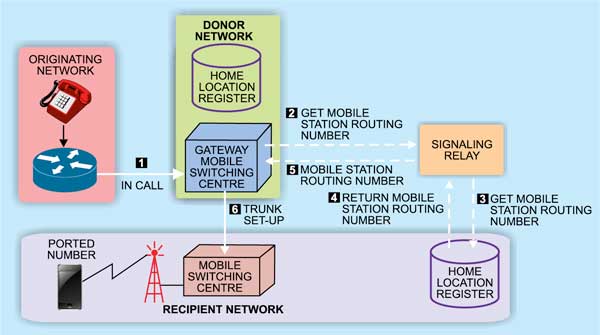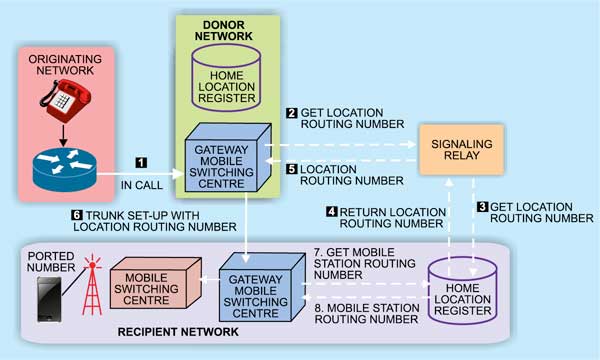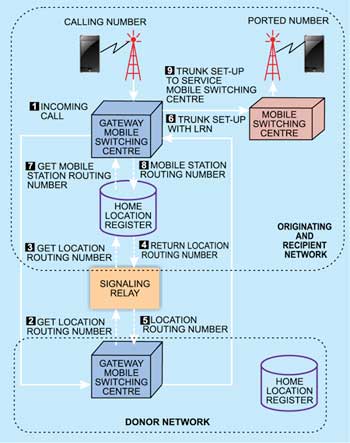NOVEMBER 2012: There has been rapid growth in the penetration of telephony services in the last few years. But the growth has not been exponential in the quality of service offered or openness of business. Consumers are not satisfied with the operators’ services and schemes.
Traditionally, consumers are required to give up their mobile number on changing service providers. As a result, they are hugely inconvenienced by having to inform everyone about the change in their number. Besides there is likelihood of important calls (from people who didn’t have the new number) being missed out, and so on. The picture has now changed dramatically with the introduction of mobile number portability (MNP).


Mobile number portability
Mobile number portability enables consumers to retain their mobile numbers when changing service providers, service types and/or locations. The Internet Engineering Task Force (IETF) has defined three types of number portability: service provider portability, location portability and service portability.
Service provider portability. It enables a customer to retain his existing mobile number when changing from one service provider to another in the same area.
Location portability. It enables a customer to retain his existing mobile number without impairment of quality, convenience or reliability when shifting from one geographic location to another.
[stextbox id=”info” caption=”MNP terminology”]Donor operator. Operator from whose network the customer is porting out.
Recipient operator. Operator who will be providing services to the customer after porting.
Number portability database. Collection/repository of all the ported numbers. Provides a unique routing number in response to a query from any network operator.
Routing number. A unique number stored in the number portability database that is used to route the call to the recipient operator.[/stextbox]
Service portability. It enables a customer to retain his existing mobile number without impairment of quality, convenience or reliability when switching from one service technology to another service technology—for example, from CDMA to GSM.
A combination of different kinds of portability options can also be used, which enables customers to retain their mobile number across different service providers, service technologies, geographical regions and national boundaries.
<1--nextpage-->
Many regulatory authorities have made number portability mandatory or are about to introduce it so as to ensure better quality of service to customers. The world’s first country to introduce mobile number portability was Singapore (1997). It was followed by the UK, Hong Kong and the Netherlands (1999), Spain (2000) and Australia (2001). As of today, there are many countries (including India) that have introduced number portability.
Implementation of MNP
Mobile number portability can be implemented using either decentralised database or centralised database approach (Fig. 1). Decentralised database solution requires each operator to maintain its own number portability database. It is useful if there are few operators. If there are many operators, centralised database solution is better.


Signaling relay approach. This approach is based on decentralised database solution. In this implementation, the donor operator identifies the correct terminating network (recipient operator) and routes the call to that network. The originating network receives a call from the caller and routes the call to the donor operator. Upon receiving the call, the donor operator network identifies that the dialed number has been ported out. Now the donor operator routes the call to the recipient operator network.
In this routing scheme, there is no need of a central database, and only the donor and recipient operators need to know about the porting of a number.
Direct relay. In this approach, the originating network contacts the gateway mobile switching centre to establish a call. The gateway mobile switching centre detects that the dialed number is ported out and relays signaling information to the home location register to get the mobile station routing number. After getting the mobile station routing number, the gateway mobile switching centre sets up trunk to the serving mobile switching centre to establish the call (Fig. 2).
In this routing approach, the originating, donor and recipient operators are kept busy to establish a call. So it may not be considered as an efficient mobile number portability scheme.







This was a great article.
However I have unique problem.
I have been trying to port my BSNL number to Jio. But whenever jio puts in a port request they get an error ‘incorrect donor’. When BSNL asked, they say that there is no problem from their end.
I have had this number for more than a year and it’s a prepaid. And I have now tried to port twice. Both times the same problem.
Could you tell me what’s the problem and the solution.
An useful and esay to understand Thanks
Thank You for your feedback.